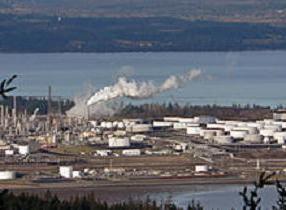Aromatic hydrocarbons (otherwise calledarenas) are organic bio-compounds, the molecules of which contain one or more cycles with six Carbon atoms. Benzene ring, is characterized by special physical and chemical properties. The name "arena" was included in organic and general chemistry in the late 18th - early 19th centuries. These included substances that consisted of two chemical compounds - Carbon and Hydrogen and had a pleasant smell (tar, balms, essential oils, frankincense). Over time, the name "aromatic hydrocarbons" has lost its significance, since aromatic substances have also been found among other classes of organic substances, and most aromatic compounds have an unpleasant or specific odor. For the first time benzene was isolated in the early 19 th century from the light gas. A little later (1845) A.F. Hoffman emits aromatic hydrocarbons (benzene) from coal tar. Nowadays, the class of arenas (according to the IUPAC classification) combines compounds based on molecules of which there are benzene nuclei. So these compounds are divided into single and multinuclear arenas, as well as aromatic hydrocarbons with condensed nuclei.
Mononuclear arenas are organic compounds,which contain a single benzene ring. The structure of the benzene molecule, a typical representative of the arenas, is most often demonstrated by the Kekule formula in the form of a cycle of six Carbon atoms that are alternately linked by simple C-C and double C = C bonds. This structure is confirmed by the data of modern physicochemical analysis.
Basic representations of Kekule on the structure of benzeneare as follows: 1) benzene has the structure of a hexagonal ring; 2) in the benzene ring there are three simple and three double bonds; 3) all six Carbone atoms in the benzene ring are equivalent to each other. The formula reflects the elementary composition of benzene, the ratio of the atoms of Carbon and Hydrogen in the molecule, the absence of isomers for monosubstituted benzene derivatives.
Aromatic hydrocarbons are enoughare common in nature. They are an integral part of coal tar, which is obtained after dry distillation of coal. Arenas are part of many varieties of oil and other natural products (resins, balms, etc.). In the process of dry distillation of coal, on average, about three percent of coal tar, or coal tar. A number of fractions are obtained from the coal tar in fractional distillation: light oil (contains xylenes, toluene, benzene, thiophene), carbolic oil (contains cresols, phenols and naphthalene), creosote oil (contains naphthalene), anthracene oil (contains phenanthrene, anthracene and other higher arenas) and the pitch that is used to cover roads and as a building material.
Application of aromatic hydrocarbons.Benzene is characterized by a specific odor, almost insoluble in water. It is a good solvent for organic bio-compounds. Synthesize from coal tar. Benzene is a valuable raw material for the production of dyes, medicines, explosives, plant growth stimulants, herbicides, insecticides, etc.
Toluene is readily soluble in organicsolvents. Obtained from coal tar, as well as from certain types of oil. From benzene alcohol, benzaldehyde, benzoic acid, dyes, medicines, saccharin, trinitrotoluene are synthesized from toluene.
Xylenes are good organicsolvents. Obtained from coal tar oil, as well as during fractional distillation of coal tar. Of xylenes, phthalic anhydride, xylene, artificial lavsan fiber is synthesized. Sometimes xylenes are added to gasolines.





